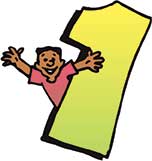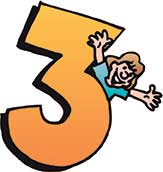Monica Kochar
A teacher is like a gardener. A gardener does not decide how high each plant will grow. Rather, he creates appropriate conditions for the complete nurturing of all plants. The plants grow on their own! Teachers, like gardeners, create an environment where the learners’ interest in learning grows.
When I started teaching in 1993, I made several discoveries that disturbed me deeply and questioned the very foundation of my understanding of education.
- Reverence for maths.
- Fear of maths, a natural corollary of point 1. Gender bias – boys are good at or need maths more than girls.
- Taking up maths as a subject of study even when their potential lies elsewhere.
I was suffocated. I realized that a fundamental shift in educational thought was needed. And I started my search.
My search for answers took me through several schools.
- Mirambika, Delhi, based on the philosophy of Sri Aurobindo.
- The Valley school, Bangalore, based on Jiddu Krishnamurti’s teachings.
- Pathways world school, NCR, International Baccalaureate.
 All these experiences helped me create a design for maths teaching that pushes students to excel, but not at the cost of stifling their innate individuality. It blends philosophy from the east and practice from the west. One of my students named it for me. She said, “Call it humanemaths, for your classes are very humane.” This has been one of the most creatively fulfilling experiences of my life.
All these experiences helped me create a design for maths teaching that pushes students to excel, but not at the cost of stifling their innate individuality. It blends philosophy from the east and practice from the west. One of my students named it for me. She said, “Call it humanemaths, for your classes are very humane.” This has been one of the most creatively fulfilling experiences of my life.
My design has two aspects – The Inside and The Outside.
The ‘inside approach’ is what I have gathered from Indian spiritual leaders (Sri Aurobindo1 and J Krishnamurti2) – the goal of the educator being to transform herself. The ‘outside’ I learnt from my exposure to international (IBMYP3 primarily) education – turning philosophy into practical tools that work. Both – eastern and western – thoughts come together to give a new way of being a maths educator.
The inside approach
The inside approach refers to the attitude of the teacher. It is the ‘connect’ that the teacher has with the students. What is connect?
“Connect is the essence of any relationship. It is the core, the heart of what makes a relationship work. It is the deep, pulsating, positive energy that flows between people.4”
“It is about laying down nourishing soil replete with love, worthiness, joy, recognitions, and positive energy.5”
This is the part of the relationship where the subject is not the medium of connection; where the teacher values the student as he/she actually is. All exceptional teachers have this quality. It is the ‘humane’ connection. There are certain characteristics:
- A maths teacher who is humane does not use scores in maths to validate or invalidate the self-esteem of the students. She tries to know the students individually and celebrates their uniqueness. She validates everyone. This is the teacher who knows who among her students is great at sports or on the stage!
- She is sensitive towards the social associations of maths. She acknowledges gender neutrality where subject performance is concerned.
- She gently discourages parents from nurturing the viewpoint that ‘boys have to be good at maths’ or ‘girls are ok without maths’.
- She does not believe that everyone needs an equal amount of maths in their lives, but respects such differences. She stretches students to do ‘their best’ and not best as decided by any standards. She will not force a musical prodigy to devote ‘extra hours’ for maths at the cost of music. There is more to life than maths!
- She is rebellious. She questions age-old views held by the society that is related to the subject.
- She progressively deepens a ‘mindful/meditative/silent approach’ to the class.
- She learns to build an emotionally safe environment for the students by working on her own emotional health.
- She believes in Continuous Professional Development. She learns it on her own if there is no external help for the same.
- She reflects on her lessons to see where the flow is in keeping with her ideals and whether she is falling short of them.
The outside approach
The outside approach is the curriculum in maths designed by the teacher. It is not enough for the teacher to be ‘connected’ with the students. The teacher’s right attitude needs to present itself in the delivery of the curriculum too. Mostly maths classes have only one method of teaching – formula and problems. This bores the students.
“A teacher with the conscious goal of supporting the success of each learner will necessarily learn to use all available classroom elements flexibly so that there is “room” for a variety of students to flourish.”6
For me, the approach has been to bring ‘variety and novelty7’ into the curriculum. This approach is not random with the focus only on fun. We are not entertainers! The approach ensures very broadly that maths classes should be:
- Mentally stimulating – there are lots of questions. A good dialogue is the basis of such a class.
- Emotionally secure and comfortable – children are happy and comfortable. There is a positive energy of trust between the students and the teacher.
- Physically flexible – children are not glued to their seats. Movement is part of the planning work.
 But behind all this, the teacher should be able to respect the different learning requirements of the students. Respecting individual differences is the base of it all. Since we can’t have different curricula for small numbers of students, my approach is to bring in variety. The teacher becomes a designer!
But behind all this, the teacher should be able to respect the different learning requirements of the students. Respecting individual differences is the base of it all. Since we can’t have different curricula for small numbers of students, my approach is to bring in variety. The teacher becomes a designer!
While designing each chapter’s lesson plan(s), ensure the following are included. This list is indicative only and not comprehensive.
- Ample mental stimulation. Ask lots of enquiry-based questions. For example:
a. Why do I take LCM while adding fractions with different denominators?
b. Why is an exponent needed?
c. When do we use fractions/decimals/percentage?
d. What is the use of knowing the equation of a parabola when we can draw and see? - Emotional connection. Make maths emotionally appealing by merging maths with creative subjects. For instance:
a. Make a tile design using any four shapes you know. It should be perfectly created and symmetrical about both the axes.
b. Write a story on the use of different units of measurement and enact it as a drama.
c. Write a song bringing out the concept of triangles and set it to music and sing.
I have found art to be a powerful medium to get students to like maths. These activities are not just ‘fun’, but are also connected with developing mathematical concepts. - Hands-on material to enhance clarity of concept. For example:
a. Using squared paper for fraction multiplication.
b. Using 100, 10, 1 squares for the four operations. - Integrate English to enhance maths. For example:
a. Crosswords
b. Word searches
c. Journals
d. Story writing
e. Explanation writing in own words - Maths talk – this is a concept given by Jo Boaler8 of Stanford University. It involves having students ‘talk maths’ in the class aloud. Asking them, ‘how do you know your answer is true’ and then letting them explain it aloud. The reasoning that they give is more important than the answer.
- Real life application. A student of mine used to ask often, “Why are we learning this?” I encouraged him to ask me this question whenever he wanted to. If I knew the answer I would give it. Else I would find it out! Teachers should know and ask questions such as these:
a. Who needs scientific notation?
b. Where is a linear equation used?
c. Who invented the decimal and why?
d. Who uses a quadratic equation?
e. Why was the symbol of square root created? - Different settings are employed. The teacher teaching and students learning is the regular classroom. I would say, plan your classes allowing an integration of four types of settings in each chapter:
a. Students working in groups of 4/5
b. Working alone with no help
c. Working with a buddy
d. Teacher leading the class
Most teachers say that they do employ the buddy system, but only when it is needed. I would say make it a part of your classroom fabric. - Continuous and comprehensive assessment. Without the continuous assessment model, our methods are useless for we do not know if learning is happening or not. A variety of assessments can be brought in easily. These could be:
a. Short, very short, and long pen and paper tests.
b. Poem or a story.
c. A HOTS problem.
d. Projects. - Exam skills (for relevant classes): Timed tests and problems from previous papers are required to be attempted at the end of every chapter. Looping the syllabus is done frequently. Let there also be demystification of an exam by open discussions on exam papers, their format, etc.
- Flipped classrooms: Classrooms are often flipped using worksheets or web-based resources. A lot of open source resources are available on the Internet. In fact the entire maths curriculum is mapped on the Internet. Why not make use of it? A typical flipped lesson based on web-based resources goes as follows:
a. Students get a web link and clear directions on what to study. This can be in school or at home.
b. Students come back and participate in a discussion on what they have learnt.
c. When students are comfortable with the concept, they work on the problems.
The teacher is a planner and manager for the students during this phase. - Projects are an integrated part of the lessons. Nothing checks and develops life skills better than projects. Maths projects can be maths only or multi-disciplinary. But they must be planned and executed properly. Projects must include:
a. A task sheet
b. Rubrics
c. Choice of presentation by students
d. An integration of maths with life skills and creativity
 For example, “Research and find the presence of proportion in our lives in any three areas. Present your information on a chart/as a booklet or a ppt. Work in groups of three and present a report of your work also. You have three days to gather information and another three days to make your presentation.” This project includes application of proportion, team work, creativity, choice, and time management.
For example, “Research and find the presence of proportion in our lives in any three areas. Present your information on a chart/as a booklet or a ppt. Work in groups of three and present a report of your work also. You have three days to gather information and another three days to make your presentation.” This project includes application of proportion, team work, creativity, choice, and time management.
I can go on and on about the many innovations I have tried and succeeded with, but space doesn’t permit me to do that here. I have not done anything new. I only synthesized the many approaches to maths teaching. Building relationships with students and at the same time building my own knowledge in education, I have created a toolbox of strategies that are useful. I have connected creativity with exam preparation without compromising on either.
Look at these strategies as a box filled with tools. We don’t need to use all the tools in all the lessons. Depending on what the lesson is, the nature of the concepts involved, and time pick the right tools. I leave it to you, the teachers, to decide which tools you find the most useful. I believe in the power of one – even if one teacher takes back one idea and implements it in her classes, it changes the atmosphere for hundreds of students.
Note: I have used ‘she’ for the teacher purely out of instinct. No offence or judgment intended. Some of the greatest maths teachers I have learnt from have been male.
References
- https://en.wikipedia.org/wiki/Integral_education
- http://www.jkrishnamurti.org/krishnamurti-teachings/view-text.php?tid=43&chid=297
- http://www.ibo.org/
- Sen, Shelja (2015-06-01). All you need is Love: The art of mindful parenting (Kindle Locations 109-111). HarperCollins Publishers India. Kindle Edition.
- Sen, Shelja (2015-06-01). All you need is Love: The art of mindful parenting (Kindle Location 100). HarperCollins Publishers India. Kindle Edition.
- Carol Tomlinson; Differentiation and the Brain
- Concept brought out by Eric Jensen under “Brain based Teaching”. http://www.jlcbrain.com/index.php
- https://ed.stanford.edu/faculty/joboaler
The author creates various kinds of multi-sensory learning environments for mathematics classes whereby learning the subject becomes a fun-filled experience. Her USP is her capacity to see the child’s learning perspective in any situation. Now, she uses this extremely important element while working with adults in the zones of teacher training, content development, testing, and writing. She can be reached through her website www.humanemaths.com.
